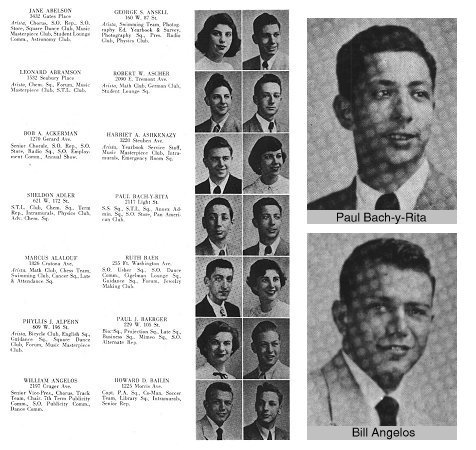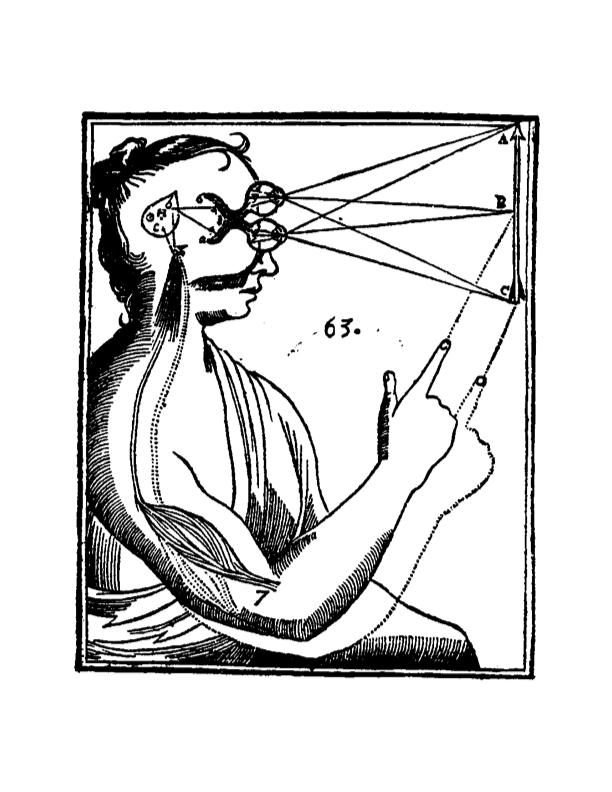Chapter One—Reconnecting

In January of 2003, I was invited to the laboratory of Dr. Paul Bach-y-Rita on the University of Wisconsin campus in Madison, Wisconsin where he was a tenured professor in rehabilitative medicine and biomedical engineering. The last time I had seen him was at our high school graduation ceremonies (the Bronx High School of Science) more than half a century before. Whereas Paul went on to fulfill the expectations that seem to be heralded by that institution’s name (seven Nobel Laureates and counting) by becoming an MD, then a neuroscientist and a world renowned brain scientist, I became a TV comedy writer. Yet, in retrospect, in spite of these obviously widely divergent life paths, it was inevitable that our paths would cross again.
Ironically, it was my relatively puny life accomplishment that sparked our reconnecting. That’s because in this outrageously meretricious culture of ours, winning an Emmy Award for TV comedy writing can make someone more eligible for visibility, i.e. taking up more space in the media, be it CNN or the Bronx High School of Science Alumni News, or word of mouth, than, say, saving a life can.
And that’s what happened in the case of Paul and myself.
And it’s also why, although we were both informed at the same time by the same former classmate who kept track of such things even fifty years after graduation, that Paul and I were now living within a 150 miles of each other, Paul called me before I could call him. (Note: Whereas the distance of 150 miles may have seemed like a journey had we still been living in the Bronx, NY, it’s little more than a stone’s throw to the folks of America’s Heartland.)
I’m sure Paul was just as naturally inquisitive as I was to see a fellow classmate after half a century—but there was something else that provoked his calling me so quickly. Coupled with my show biz visibility was Paul’s assumption that I was also—if not wealthy by now—then certainly I was in touch with people who were. And as I would soon learn, although Paul lived quite comfortably with his wife and two college age daughters on the salary of a tenured professor, he had also personally invested not only his time but his own funds—for almost 40 years—into developing what it was he said on the phone he was anxious to show me.
In doing so, Paul had also created—literally and figuratively—the legendary ivory tower existence of a scientist so passionately involved with his work, that the outer demands of real life were only secondary to fulfilling the immediate needs and desires of his work and his family. In fact, it was his love for his family that would ultimately take precedence over all else.
When he invited me to come to Madison to see the prototype he and his colleagues had created of a device now called the BrainPort, I mentioned that I had just spent the last few years teaching grade school children about what was happening all around us by the mid-90’s—the so-called Digital Revolution. And a cultural artifact of that period was that wherever I went, I always carried with me my Sony VX-1000, a video camera that is still used by many documentary filmmakers around the world. He was more than delighted by the prospect of my documenting what would happen next.
From the first day of my visit, although I was often watching what happened through the lens of the videocam, I was still immediately impressed by the capabilities of Paul’s invention once I saw it in action. I was also confused by those same capabilities before the day was over, but I didn’t know it at the time—because I was so overwhelmed by what I was experiencing, that my confusion took a back seat to the day-long series of events and conversations.
The confusion would only really begin to surface weeks later, after I had moved to Madison to begin working with Paul and his associates on a full-time basis for the next two years. Besides, what I saw and heard that first day and for the next two years always had at least a partial explanation as described to me by Paul and his engineer and physiologist associates. And that was certainly enough for someone like myself, who would be venturing, for the first time, into the field of Neuroscience, and specifically into Paul’s field of expertise—the Brain.
However, looking back, I can now see that it was the unanswered questions that tipped the scales and made me agree to assist him in finding the funding he needed to launch a commercially viable enterprise for the further exploration and exploitation of his BrainPort. The pull of those questions will become clearer to the reader just as they did to me as the unfolding events also uncovered unexpected connections to a storehouse of information and insights that had been gleaned from an impeccable world-class scientific source that were lying dormant in my memory banks for more than a decade—as if they were waiting for these very connections to reveal themselves.
If all this sounds a bit metaphysical—which by the way means “beyond physics”—how much of what we actually call Science today, including all we claim to know about the universe we inhabit, hasn’t emerged from what was once metaphysical and strange? More to the point, much of what Science claimed as “known” less than 100 years ago was shown to be quite wrong, or at best limited by Quantum and Relativity Theories. Not even its explanations of Time and Space survived. But, as I would learn first hand, Science itself is not to blame, it’s the way scientists approach Science that bears closer scrutiny.
It is nevertheless a fact, that even during that first phone conversation Paul and I were each made aware of each other’s interest in the brain or mind. I’m using both words as we probably did during our talk. Paul’s interest was of course quite specific—he was a neuroscientist, I, on the other hand, had developed my own interest through a longtime friendship and mentorship with two individuals—the eminent Theoretical Physicist David Bohm, and the world renowned spiritual figure J. Krishnamurti. So, although this is really a bad metaphor for reasons we’ll go into later, Paul’s interest was in the Brain/Mind’s “hardware,” whereas mine was in its “software.”
What tied it all together for us, however, was when I mentioned that through my friends I had learned that Thought—that is, the thinking process, itself—was a material process and by no means something ethereal. Paul was shocked by the statement and asked how I could think such a thing. I explained it as they did—that thinking could be measured and it had been observed in a wide variety of contexts including fMRI scans; that it is inseparable from electrical and chemical activity in the brain and nervous system, and from concomitant tensions and movements of muscles.
He then asked where he might find verification of what I said. I told him he’d probably find it in Bohm’s classic book entitled Wholeness and the Implicate Order. After saying he’d call me right back, he hung up the phone, drove down to the neighborhood Borders Bookstore, bought a copy of the book, drove back home, called me back and recited the passage verbatim, citing Chapter and page number. He then told me he was immediately copying the passage into a paper he happened to be writing at the time. So, there was already a hint of inevitability in this half-century relationship that had just been re-established.
Fortunately, almost all of what I saw and heard from that first day and in the two subsequent years I spent in continued exploration of the device with Paul and his little band of geniuses was documented. The videos that will be accompanying these pages contain many key moments during that exploration, offering readers an opportunity to see precisely what I saw and heard. Perhaps this will allow for a clearer understanding of how those same experiences, when reviewed later with “different eyes,” became the foundation for a totally different understanding of the process known as Perception—transforming it from the generally accepted understanding of it as a passive activity, driven primarily by external stimuli, to an action-oriented process co-involving perceiver and environment on a fundamental level.
Not only does this new perspective allow for a complete explanation of how the BrainPort is capable of doing all that it has shown us it can do, so far—it also points the way to a new understanding of a centuries-old dilemma that has plagued Science as well as our own understanding of ourselves and our relationship to the world we live in—the so-called “Mind/Body Problem”; which was first articulated in a theory that was put forth hundreds of years ago by the great René Descartes—that Body and Mind are separate entities—the Mind being “the seat of the soul.” That theory has itself morphed into various other theories that claim to have gone beyond the “Dualism” spawned by Descartes’ theory, when, in fact, they may just have replaced it with other disguised forms of the same duality—including what philosopher David Chalmers has defined as “the hard problem” in neuroscience’s attempt to understand Consciousness.
